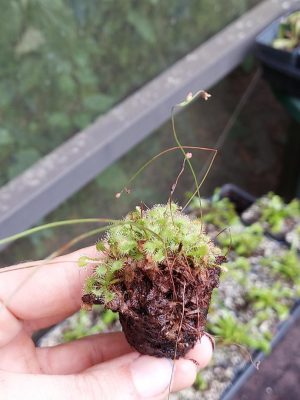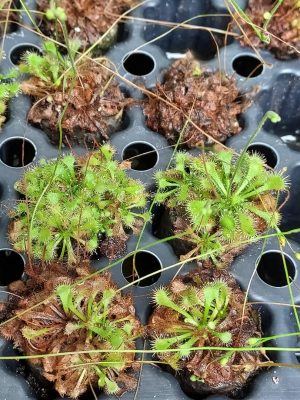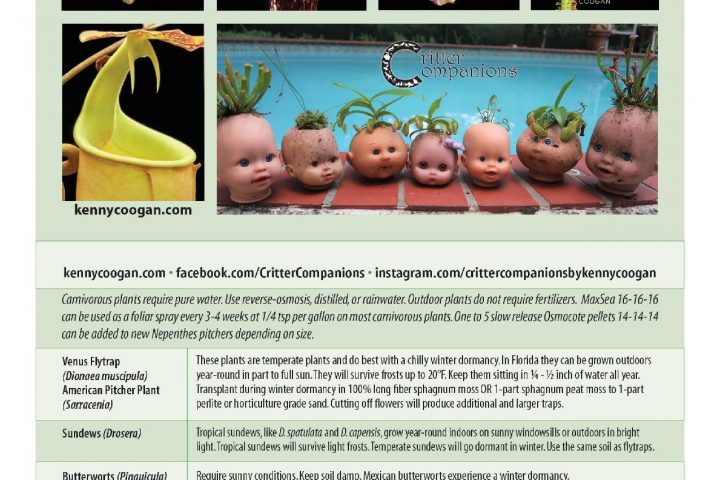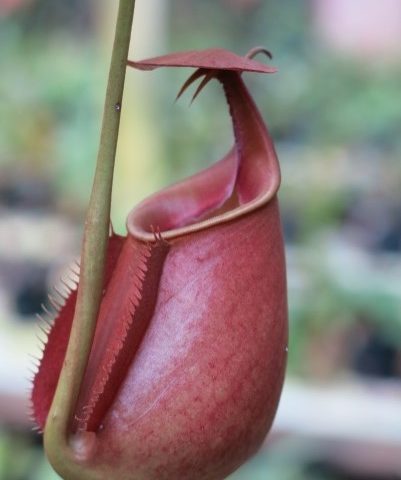Carnivorous Plant Pests and Diseases
Regardless of how good you garden, eventually you will be visited by pests and diseases. Here are some common carnivorous plant pests and diseases we have encountered here in Florida.
Fusarium sp.
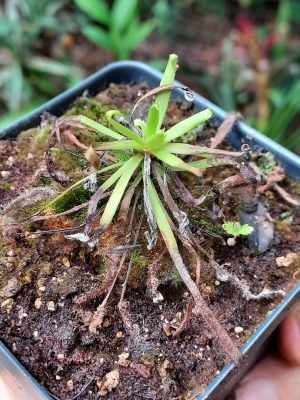
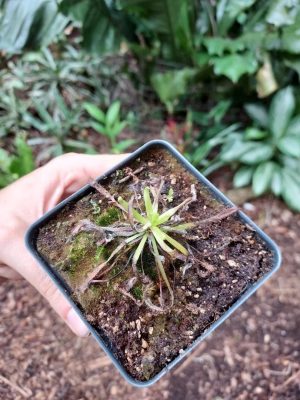
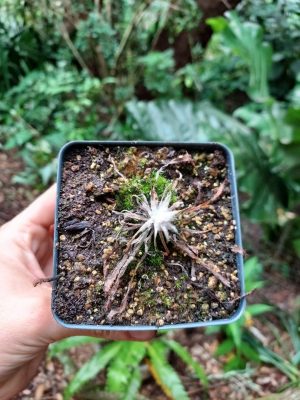

Fusarium sp. will wipe out entire trays of plants. This species marched through a tray of Drosera capensis. Fusarium diseases are significant hindrances to food plant production as well and are very difficult to control, especially soilborne diseases. Earlier detection of plant pathogens is essential for plant health and appropriate disease management, for example, soil disinfestation, the use of disease-resistant cultivars, and the application of fungicides.¹ If we see Fusarium in the future, we will remove and dispose of the plant, its substrate, and pot immediately to prevent the spread. Medallion WDG Fungicide and Eagle 20EW Fungicide are safe for carnivorous plants and combat Fusarium species. Nitrogen fertilization has been shown to influence the occurrence and the impact of Fusarium head blight in wheat.² So it is possible that the application of MaxSea fertilizer aided in this fungus spreading.
Pestalotiopsis Blight

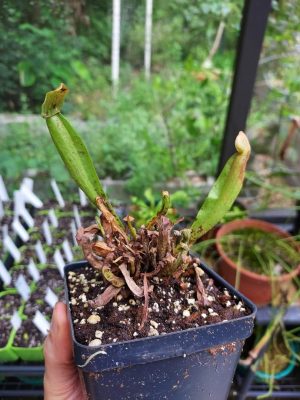
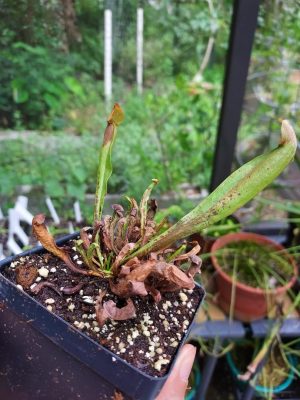
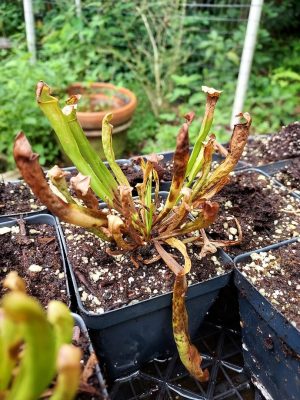
This also took out a lot of Sarracenia 'Maroon' plugs (over 72) in the springtime after an application of MaxSea fertilizer. Pestalotiopsis sp. is a fungal disease that is considered usually a minor disease. It attacks foliage that has been injured or weakened by unfavorable weather or growing conditions. Usually, the killed foliage is near the base of the plant and where foliage is relatively dense. The disease usually starts at the tip of the foliage and progresses towards the leaf base. The color of the foliage goes from green to yellowish, then to a dark brown that can look almost black.³ Medallion WDG Fungicide and Eagle 20EW Fungicide are safe for carnivorous plants and combat Pestalotiopsis.
Rhizoctonia solani and Pythium sp.
Cylindrocladium
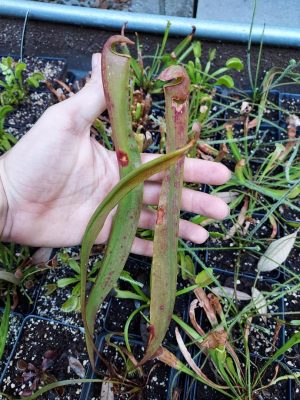

Cylindrocladium is a fungi that attacks over 100 woody ornamental shrubs and trees as well as foliage plants including asparagus ferns and palms. Depending on the host plant and species of Cylindrocladium involved, damping-off, wilt, root rot, stem canker, crown rot or leaf spot may occur. It is recommended to remove and destroy severely affected plants.⁵
Check out this ICPS article on Rhizoctonia, Fusarium and Clyindrocladium:
"Rhizoctonia and Fusarium are weak pathogens, but when given food, they can take a toll on your plants, especially your older ones. The pathogens will first eat the dead material, gain momentum, and then attack live tissue."
Pinnaspis aspidistrae nr.
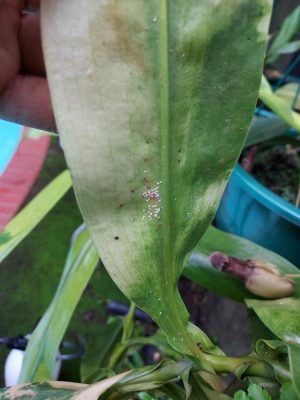
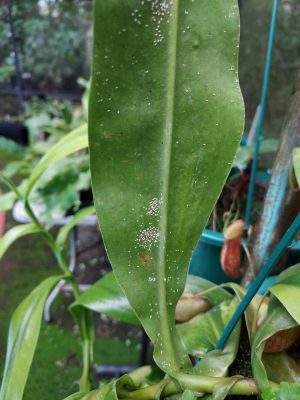
All of these pests and diseases were identified - sometimes by molecular DNA analysis - through my county's Extension Office. This service was done for free. If you have a pest or disease look into your Extension Office's services. This "snow scale" is very closely related to Pinnaspis aspidistrae - however it may not be that exact species. These are native to the Philippines and have not been identified in Florida as of yet! I have not imported from the Philippines, but my other landscape plants, houseplants, or carnivorous plants could have brought this pest to my nursery. TalStar or Orthene is recommended. A lite scraping with a toothbrush was used prior to the application of the insecticide.
Chrysomphalus aonidum
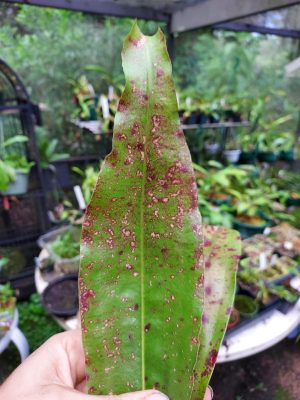
Chrysomphalus aonidum, known generally as Florida red scale, is a species of armored scale insect. Other common names include the Egyptian black scale, circular black scale, and citrus black scale.
We removed the infected leaves, and then sprayed the host plant and plants in the nursery with Orthene to prevent the spread.
Here is a very throughout ICPS webinar on diseases, pests and cures for carnivorous plants:
¹Arie T. Fusarium diseases of cultivated plants, control, diagnosis, and molecular and genetic studies. J Pestic Sci. 2019 Jul 25;44(4):275-281. doi: 10.1584/jpestics.J19-03. PMID: 31777447; PMCID: PMC6861427.
²Katharina Hofer, Gero Barmeier, Urs Schmidhalter, Katharina Habler, Michael Rychlik, Ralph Hückelhoven, Michael Hess,
Effect of nitrogen fertilization on Fusarium head blight in spring barley, Crop Protection, Volume 88, 2016, Pages 18-27, ISSN 0261-2194, https://doi.org/10.1016/j.cropro.2016.05.007. (https://www.sciencedirect.com/science/article/pii/S0261219416301181
³https://web.extension.illinois.edu/focus/index.cfm?problem=pestalotiopsis-blight
⁴https://www.canr.msu.edu/resources/pythium-root-and-stem-rot
⁵Crous, P. W. 2002. Taxonomy and pathology of Cylindrocladium (Calonectria) genera. 294 pp. 320 b & w illustrations. APS Press. 1-800-328-7560)

